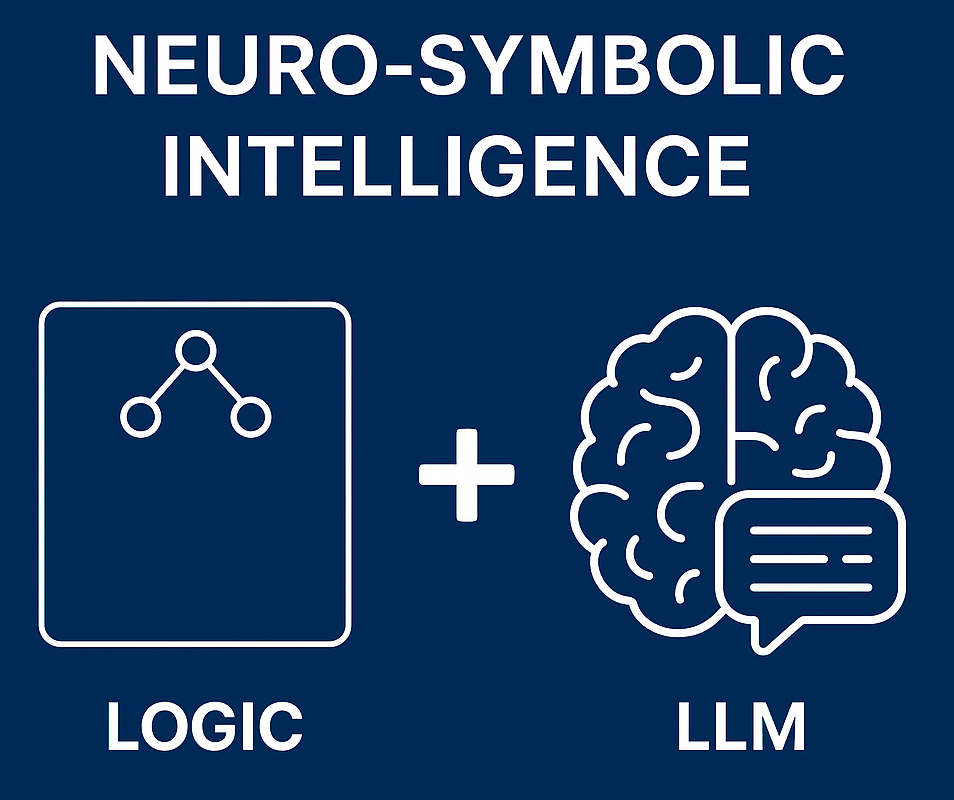Why Legal AI Needs Neuro-Symbolic Intelligence — Not Just Larger Models
March 26, 2025

At PaxAI, we’re building AI-powered digital paralegals designed for trust, not just speed. That’s why we’ve embraced a neuro-symbolic AI approach—combining the language capabilities of large language models (LLMs) with the structure and rigor of symbolic logic. It’s a transformative path forward for legal automation—one that ensures accuracy, explainability, and repeatability in high-stakes legal tasks.
This is not just theory. In collaboration with the Stanford CodeX Center for Legal Informatics, our team recently published a paper, “Towards Robust Legal Reasoning: Harnessing Logical LLMs in Law”, exploring how this method can deliver more reliable results than conventional GenAI alone.
Why Legal AI Needs More Than Black-Box LLMs
The legal field is uniquely high-stakes—requiring rigorous reasoning, explainability, and repeatability. While large language models (LLMs) like GPT-4 and o1 excel at understanding and generating language, they are probabilistic—making it difficult to trust their logic, especially in legal settings.
Lawyers and courts don’t just want answers. They need justified conclusions based on interpretable rules.
Real-World Consequences - A now-famous example is the Mata v. Avianca case, where an attorney submitted fake case citations—hallucinated by ChatGPT. It exposed the dangers of unguided LLM outputs in legal workflows. Even when LLMs aren't blatantly wrong, they can be:
- Inconsistent — Same query, different answers.
- Opaque — No clear reasoning path.
- Unreliable — Studies conducted by Stanford and Yale Law Schools report hallucination rates of at least 58%.
That’s not acceptable in legal practice.
What We Need Instead - To integrate AI into law, we need systems that guarantee:
- Accuracy - Remove hallucination
- Repeatability — Same input = same output.
- Auditability — Every step traceable.
- Transparency — Show the reasoning path.
This is where PaxAI’s neuro-symbolic AI and human-in-the-loop aproaches come in. By combining the rigor of logic-based systems with the adaptability of large language models, we ensure outputs are both verifiable and grounded in legal context. This hybrid approach offers the reliability today's legal workflows demand.
The Neuro-Symbolic Approach: Marrying LLMs with Logic
At PaxAI, we believe in power of langauge models and recent AI advancements. Our founding team has been at the forefront of AI research and development at legendary reseatch institutes such as Xerox PARC as well as big technology companies such as Amazon, eBay, and Automation Anywhere. As a result, we also understand the limitations of langauge models. That's why we are taking a neuro-symbolic AI approach—combining the power of LLMs with the precision of symbolic logic.
LLMs understand the text. Logic engines do the reasoning.
Together, they form the foundation of an AI legal assistant that thinks like a lawyer—not just predicts like a chatbot.
How it Works
- LLMs read complex documents (contracts, laws, filings).
- PaxAI extracts rules and facts into a structured format (like Prolog).
- A logic engine applies the rules and determines the outcome.
Instead of opaque answers, you receive clear, actionable insights: a definitive YES or NO with supporting justification, a transparent step-by-step logic trail, and deterministic, repeatable behavior. This isn’t just theoretical—it’s already delivering real-world results.
Research in Collaboration with Stanford CodeX
In our Stanford collaboration and recent publication, we compared three approaches:
- Vanilla LLM: Ask the model to answer legal questions directly.
- Unguided Logic: Ask the model to generate logical rules, without guidance.
- Guided Neuro-Symbolic: Equip the model (LLM) with structure, expert knowledge, and legal terminology to guide how legal logic is written—then run reasoning over this informed framework.
The results were striking:
- The guided neuro-symbolic method achieved up to 100% accuracy and consistency across legal queries in insurance contracts.
- Vanilla LLMs, even advanced ones like GPT-4o, achieved only ~78–88% accuracy, with inconsistencies and occasional errors.
- The unguided logic approach, where models generated rules with no structure, performed worse than vanilla LLMs—highlighting the need for guided logic reasoning.
Key Learnings - With advancements in language models and their reasoning capabilities, vanilla LLM approaches are producing increasingly accurate results. However, achieving 100% accuracy and repeatability remains a key challenge. Our goal is to develop algorithms that augment state-of-the-art language models, and we believe that combining legal terminology (ontology), formal logic, and LLMs can deliver significant value in legal applications.
A Use Case: Securities Exemption Filings
One example where our neuro-symbolic approach shines is in security exemption filings. Companies rely on legal exemptions (like Reg D under the SEC and other regulations) to raise funds without full registration. These filings have strict criteria: investor limits, disclosure rules, qualification checks.
Our system reads the exemption laws and company filings, extracts the relevant facts, encodes the rules (e.g., “no more than 35 unaccredited investors”), and then uses a logic engine to determine if the filing qualifies.
qualifies_for_506b(Filing) :-
non_accredited_count(Filing, Count), Count =< 35,
no_general_solicitation(Filing).
The result? A clear answer—and a clear explanation. If a condition fails, the system shows exactly which rule was violated. This is legal reasoning, at scale.
Why It Matters
🔍 Explainability: Every output is traceable through a logical chain. No black-box magic.
✅ Consistency: Same input, same output—always.
🧠 Accuracy: Logic guards against LLM hallucinations and ensures precision.
⚖️ Compliance-Ready: Built for legal domains where transparency isn’t optional.
Building the Next Generation of Legal AI
At PaxAI, we’re not chasing hype. We’re focused on building trustworthy, auditable, and legally sound AI tools. Our digital paralegals don’t just answer questions—they explain how and why, with the rigor of symbolic logic and the flexibility of modern language models.
We believe neuro-symbolic AI is the future of legal tech. And we're proud to be leading the way.
Further Readings: System-2 Reasoning in Legal AI
-
System 2 Legal Reasoning - Stanford's Codex Initiative lead by our founder Dr. Marzieh Nabi